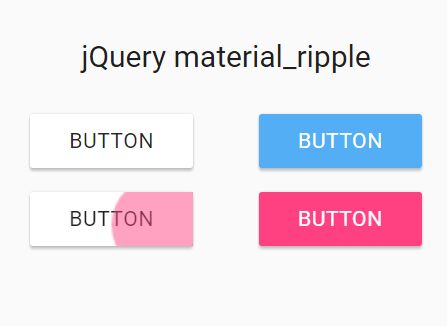

- #MATERIAL DESIGN ANIMATION ON CLICK UPDATE#
- #MATERIAL DESIGN ANIMATION ON CLICK CODE#
- #MATERIAL DESIGN ANIMATION ON CLICK WINDOWS#
#MATERIAL DESIGN ANIMATION ON CLICK UPDATE#
This session object can update the content of a dialog that has already been shown or close a visible dialog. The event arguments for these callbacks contain a DialogSession object. You can also register for the DialogOpened and DialogClosed events directly on the DialogHost. The Show method also includes overloads with callback delegates invoked when the dialog is opened or closed. Īwait (person) įigure 4: A dialog created from a DataTemplate A better approach is to declare the dialog’s UI as a DataTemplate and pass a data object as the dialog’s content. This approach certainly works but requires creating the dialog UI in code.

var dialogContent = new TextBlockĪwait (dialogContent) This allows for creating dynamic dialogs. When using the Show method, you must pass the content for the dialog. The dialog’s content was specified in XAML and then shown or hidden in the previous examples. All of these methods return Tasks and should be used as async methods. įor even more control over dialogs, there are several static Show methods on the DialogHost class. To make the dialog close automatically if the user clicks on the overlay, set the CloseOnClickAway property to “True”. private void ShowDialog_OnClick(object sender, RoutedEventArgs e) ShowDialogCommand = new Rela圜ommand(OnShowDialog) public class MainWindowViewModel : ViewModelBase The IsOpen property can also pair with data binding, making it easy to use in MVVM architecture. Toggling the state of this property causes the dialog to show or hide. IsOpen Propertyįor simple programmatic control over the state of the dialog, the DialogHost provides an IsOpen property. Īlso, if you want to close a dialog, you can use the CloseDialogCommand. Set this as the Command property, and it will show the dialog. This is the simplest pure XAML option as it simply walks up the element tree until it encounters a DialogHost control. The DialogHost provides two RoutedCommands for showing and hiding dialogs OpenDialogCommand and CloseDialogCommand, respectively. You may elect to use any number of these options in your app. Because of this, there are several ways to show a dialog. The DialogHost works well with applications using both MVVM and code-behind architecture. The host control wrapping the rest of the content. MaterialDesignEmbeddedDialogHost is new in version 2.5.0 which is currently in beta.įigure 2: The layers of a DialogHost. If you want the dialog constrained to its parent window, you can apply the alternate MaterialDesignEmbeddedDialogHost style to the DialogHost.

Since a popup is a separate window, the dialog can be larger than its parent window. By default, the dialog shows inside of a popup. Finally, the dialog itself contains the content to display. The overlay is the darkened region that covers all of the content within the host control. Typically, this is placed near the root of your XAML so that it covers everything. The host control contains the content that the dialog should be placed on top of. The DialogHost consists of three individual UI components: the host control, the overlay, and the dialog. Running application then looks like this:įigure 1: Simple dialog host application. We will start with a very simple example. Though, the XAML Dialog Host can be used without MVVM as well. Also, it surmises that you understand the Model-View-ViewModel (MVVM) pattern. To begin, this post assumes that you have already set up a project with MDIX. XAML Dialog Host provides a simple way to display a dialog with information or prompt the user when required. In this tutorial, we look at the XAML Dialog Host, one of its most powerful controls.
#MATERIAL DESIGN ANIMATION ON CLICK WINDOWS#
Basic Primary Accent Warn Disabled favorite Link įollowing will be the output for above material design buttons code.įinally, we have completed Angular buttons tutorial with Angular Material design.Material Design In XAML (MDIX) is a beautiful theme library that brings Google’s Material Design to your Windows Presentation Framework (WPF) applications. To create Angular Material Mini Fab Button use the following code. Basic Primary Accent Warn Disabled favorite Link Create Angular Material Fab Button To create Angular Material Fab Button use the given below code. favorite favorite favorite favorite favorite Create Angular Material Fab Button
#MATERIAL DESIGN ANIMATION ON CLICK CODE#
You can use the following code in your Angular template to create icon buttons. Go to file and include the following code. Although this tutorial is about material design buttons, we can also import various angular material UI components in the future. Create custom Angular material module file to import material UI components.


 0 kommentar(er)
0 kommentar(er)
